Virtual Consultations Available! Start Your Journey Today.
Schedule A ConsultationBased on over 2500 gynecomastia surgeries, Dr. Cruise has classified gynecomastia into 6 different types. Each type is unique in its own way and must be treated differently. The purpose of the Cruise Classification System is to:
A classification system is only useful if it outlines a treatment plan.
Dr. Cruise
Breast tissue – under nipple/areola only
Nipple position – above border of pec. muscle
Lateral chest fold – tight, straight
Breast tissue – extends over chest fold
Nipple position – above border of pec. muscle
Lateral chest fold – tight, rounded
Breast tissue – extends over chest fold
Nipple position – above border of pec. muscle
Lateral chest fold – tight, rounded
Breast tissue – extends into axilla
Nipple position – >1.5 cm below border of pec. muscle
Lateral chest fold – small breast roll in front of arm pit
Breast tissue – extends into axilla
Nipple position – ≥ 2 cm below border of pec. muscle
Lateral chest fold – breast roll extends to the back of arm pit
Breast tissue – extends into axilla
Nipple position – ≥ 2cm below border of pec. muscle
Lateral chest fold – breast roll extends around to back
Type 1 gynecomastia is more commonly referred to as puffy nipples. Patients with puffy nipples will have tight skin. This allows the skin to wrap around the pectoralis border in a straight line, because there is little or no breast tissue blurring the muscle definition. In contrast, Type 2 gynecomastia typically has a breast lump or fatty tissue extending over muscle border. This causes chest fold rounding. In addition to the visible nature of growing tissue, many people with mild to moderate breast tissue growth will experience breast tenderness.

“Achieving optimal results and avoiding complications requires both expertise and a plan”
Dr. Cruise
This question is actually very difficult to answer from a medical perspective. Compared to other medical conditions, clinically relevant information is not available for treating breast gland tissue in one or both breasts. This ignorance is unacceptable particularly because it has such a significant impact on so many men’s lives. Even plastic surgeons who diagnose gynecomastia are often vague as to what is the best way to evaluate and treat it.
To simplify this, Dr. Cruise outlines the 8 areas of the upper body that need to be considered to provide a surgical road map that will predictably achieve your optimal results.
Puffy nipple reduction surgery is an effective solution for individuals struggling with prominent or puffy nipples caused by excess glandular tissue, excess fat tissue, or a hormonal imbalance. This procedure helps to achieve a more contoured and masculine chest by removing excess breast tissue and excess fatty tissue, creating a smoother and firmer appearance.
Incision visibility is less of an issue when the gynecomastia diagnosed is mild Type 1 Gynecomastia compared to the other types. This is because even the most aggressive incision (the superior crescent) still remains within the “forgiving” areola compared to the less-forgiving non-areola skin. Puffy nipple surgical results typically leave no visible scarring.
Type 1 patients do not have much to worry about extra incisions as their skin is already tight. Their incision will be limited to around the areola. There are some Type 1s that have very low nipples. In these patients, nipple elevation is usually required to prevent the nipple from “falling off the pectoralis border.” If this happens, the nipple falls into the chest fold and it looks like it is “cratered.” Clearly, not desirable. This requires a superior areola incision which is slightly more visible but still not an issue.
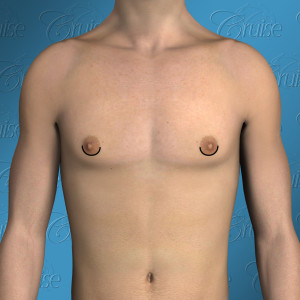
Inferior crescent excision means that a 1/4″ to 1/2″ crescent-shaped piece of skin is removed just below the areola. This does several good things beyond tightening the chest skin. More importantly, it pulls the areola tight similar to getting the wrinkles out of a bedsheet.
This little maneuver has a large impact on getting rid of excess skin that has been stretched over time. It also flattens the lower chest skin mildly so that it better wraps around the pec. border improving definition. The incision is located low on the areola where it is very hard to see even early on.
Crescent incisions, however, create skin margins that do not line up exactly. The side toward the areola will always be shorter than its counterpart. Suturing together this length mismatch may create mild bunching that takes a little while to fade away.

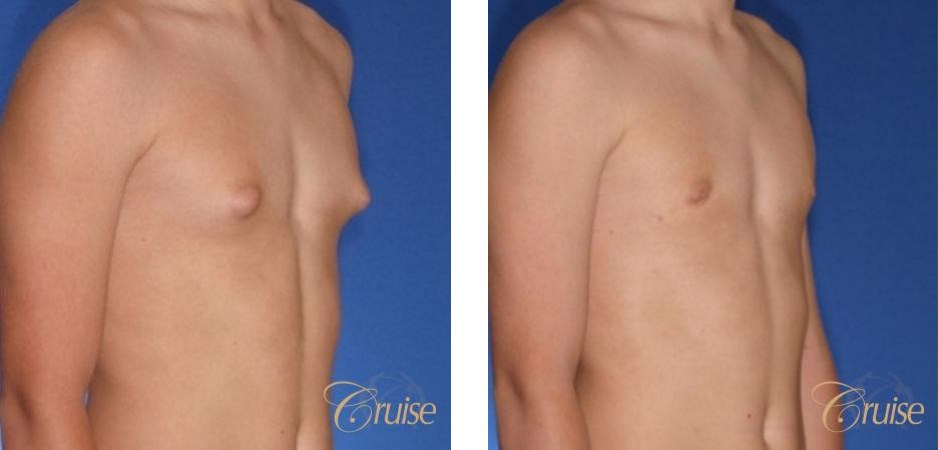
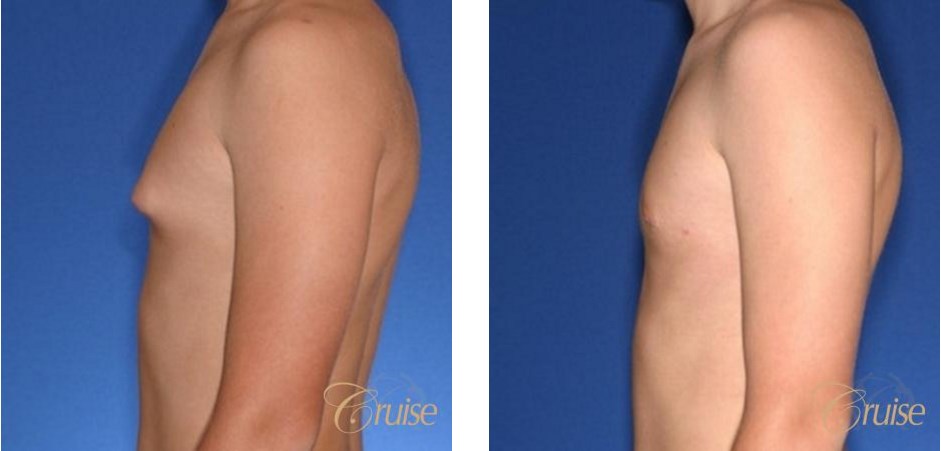
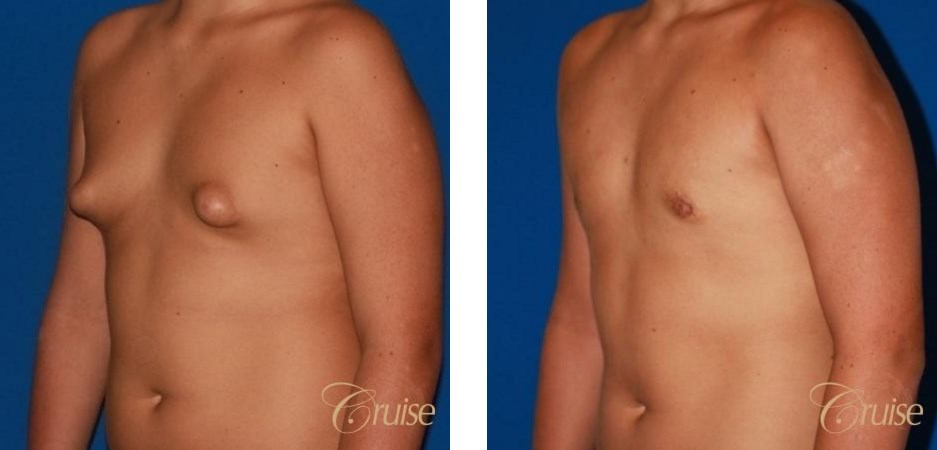
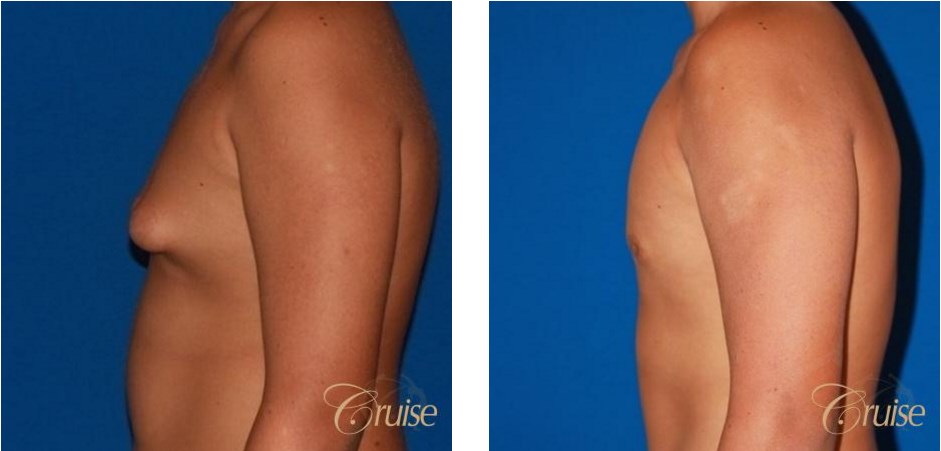
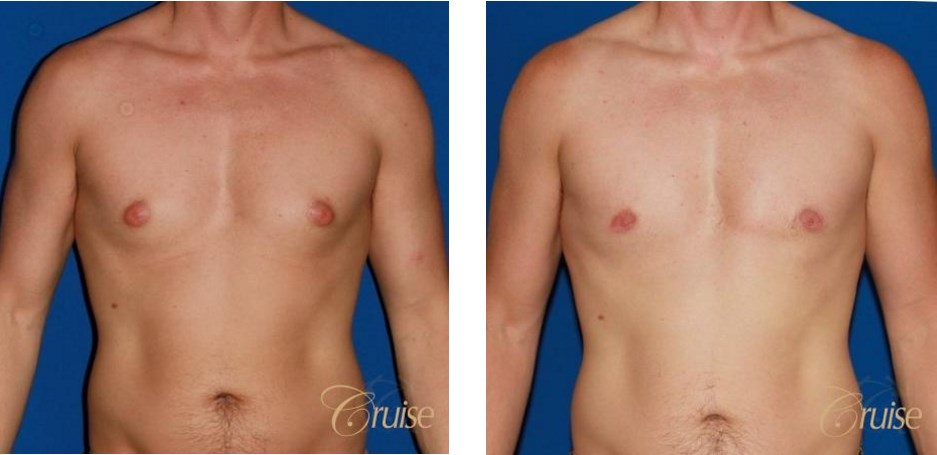
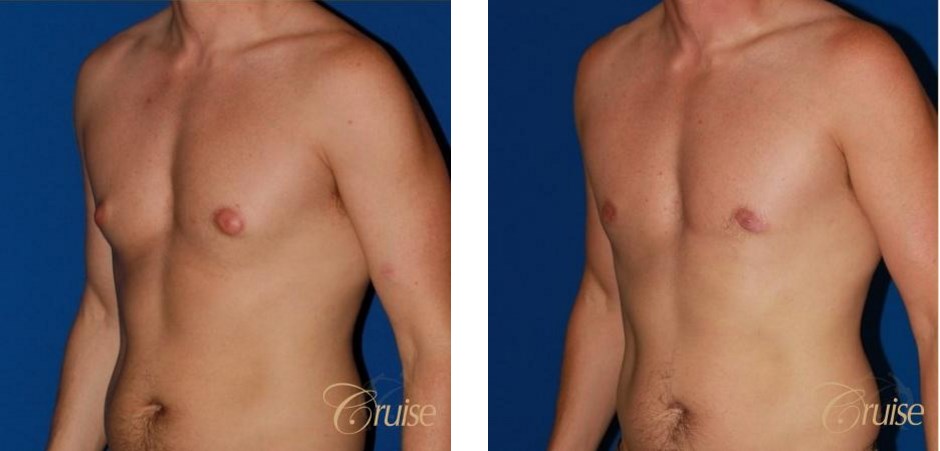

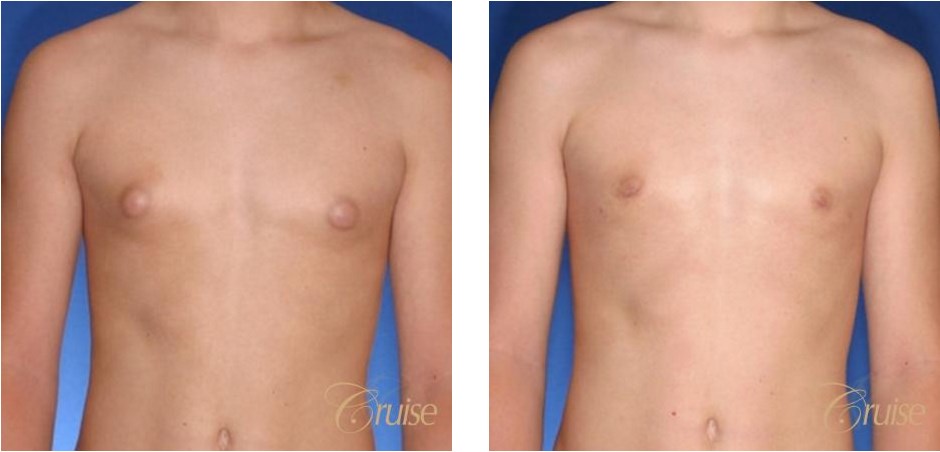
Unfortunately, because of the stigma associated with it, it is not always readily apparent what your loved one may be experiencing. In fact, the men or more commonly pubescent teenagers, who are most deeply affected go to great lengths to suffer alone. The Internet becomes the only one they can talk to. This dangerous combination of deep emotional pain and isolation makes them particularly vulnerable to exploitation. Exploitation that takes the form of the literally thousands of “miracle” cures that have no medical merit to the more nefarious types looking to take advantage of the the emotionally weak.
I felt embarrassed having an femininely shaped chest. I didn’t feel masculine and it caused me great anguish.
I avoided situations that required me to take my shirt off, like swimming. I would hunch my shoulders so that my shirt would drape over my chest, because I was afraid other people would notice my chest.
A friend of mine told me I had man-boobs and I immediately realized that other people noticed what I had seen all along. I immediately felt embarrassed and wanted to disappear.
I would wear loose fitting shirts and hunch my shoulders so that my chest wouldn’t protrude. I was unable to stick my chest out with pride (literally).
Try diet and exercise to see if you can reduce the appearance of your gynecomastia. If you’re still unhappy, research a competent surgeon. That’s the route I took and I was fortunate enough to find Dr. Cruise.
I did pursue gynecomastia surgery and the only regret I have is that I did not do it sooner. I am so pleased with the results that I can not wait for the summer so I can walk along the beach with my shirt off. The boost to my confidence has been enormous. I totally believe it was worth it. The biggest impact I’ve seen (besides my confidence) is that I’m able to stand up straight again without worry about my “man-boobs” protruding. Something as simple as standing up straight not only makes me look more confident, but I feel more confident.
Vincent, 25
Most of the time, your son will not want to “speak up” about his embarrassment of Gynecomastia. In addition, he probably does not even know there is a name for the condition that he suffers with. The key here is to educated the child on Gynecomastia. The best way is to first approach your child and ask them why he has not been going to the pool or avoiding shirtless situations. If you have a specific example, use it. Have this conversation in a private place where he has your full attention and feels safe to open up. Using media coverage such as the article in Parenting OC is a good way to break the ice. Some intro statements could be:
